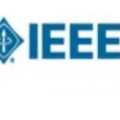The brisk progression of the industrial digital innovation, leading to high degree of automation and big data transfer in manufacturing technologies, demands continuous development of appropriate off-line metrology methods to support processes' quality with a tolerable assessment of the measurement uncertainty. On the one hand specific-area references propose methods that are not yet well optimized to the changed background, and on the other, international general recommendations guide to effective uncertainty evaluation, but suggesting procedures that are not necessarily proven efficient at the micro- and nano-dimensional scale. The well-known GUM approach (i.e. frequentist statistics) was analyzed with the aim to test consistently its applicability to micro/nano dimensional and surface topography measurements. The investigation assessed three different clarifying situations, giving rise to consistent model equations, and to the achievement of the traceability. The choice of the cases provided a number of influence factors, which are typical liabilities at the micro and nano-length scale, and that have been related to the correction of the systematic behavior, viz. the amount of repeated measurements, the time sequence of the acquired micrographs and the instruments used. Such approach allowed the successful implementation of the GUM approach to micro/nano dimensional and topographic measurements, and also the appraisal of the level of efficacy of the method, its application limits and hints on possible future developments.
翻译:工业数字创新的隐隐性发展导致制造业技术高度自动化和大数据转让,这要求继续开发适当的离线计量方法,通过对测量不确定性的可容忍的评估来支持进程质量;一方面,具体领域的参考提出了尚未与变化背景最优化的方法,另一方面,国际一般建议提出了有效不确定性评估指南,但提出了在微型和纳米尺度上不一定证明有效的程序;对众所周知的GUM方法(即经常数据)进行了分析,目的是不断测试其对微/纳米尺寸和表面地形测量的可适用性;调查评估了三种不同的澄清情况,产生了一致的模型等式,并实现了可追溯性;对案例的选择提供了若干影响因素,这些影响因素是微观和纳米尺度上典型的负债,与系统行为的纠正有关,即反复测量的数量、所获取的显微图和所用仪器的时间序列,从而得以成功实施GUM方法对微/天文尺度和今后可能极限的测量,还使得GUM方法对微/天文尺寸和内空尺度的应用得以成功进行。




